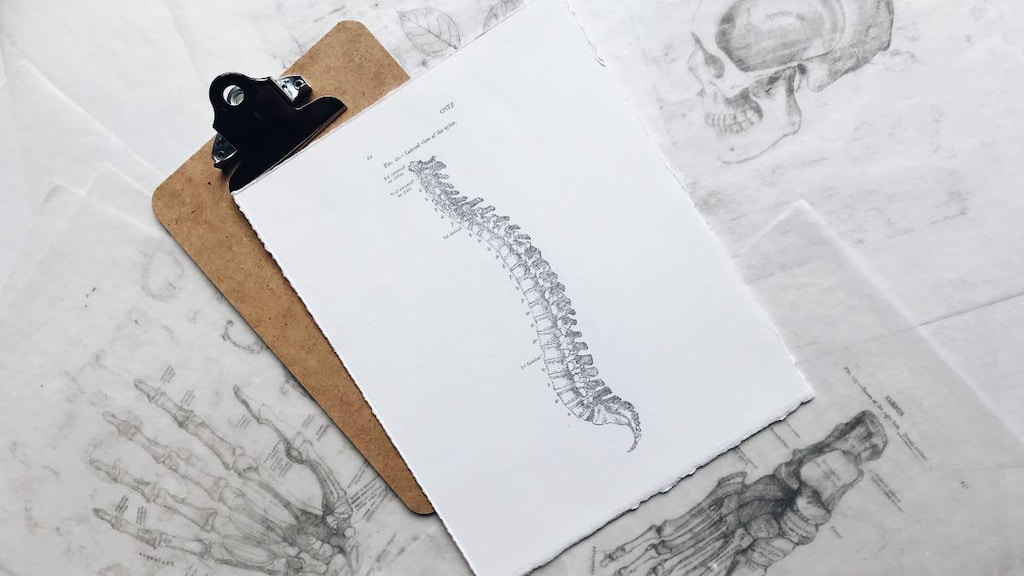The 5 types and 6 key domains of psoriatic arthritis

Psoriatic arthritis (PsA) is a form of chronic arthritis that typically occurs in about 30 percent of people who have a skin condition called psoriasis. It tends to be diagnosed within five to 12 years of being diagnosed with psoriasis after psoriatic arthritis symptoms start to appear. Psoriatic arthritis can also develop in people without psoriasis, although these people tend to have a relative who has the skin condition.
Psoriatic arthritis is an autoimmune disease that causes excessive inflammation of the joints and surrounding areas and it is unclear why this occurs. Usually inflammation occurs at a site of injury or disease when the body sends signaling molecules and white blood cells to help repair the site. This repair process normally turns off before it does damage to the body. However, in people with psoriatic arthritis even the movement of a joint may result in mechanical stress that leads to excessive inflammation.
People with certain variations of human leukocyte antigen (HLA) genes and other genes appear to be more at risk of psoriatic arthritis. Although, environmental factors are also thought to play a role in the development of the disease.
Psoriatic arthritis is categorized into five different types and has six key domains that are used to describe the different presentations of the disease.
What are the 5 types of psoriatic arthritis?
The five different type of psoriatic arthritis are:
-
Asymmetric oligoarticular
-
Symmetric polyarthritis
-
Distal interphalangeal predominant
-
Spondylitis
-
Arthritis mutilans
The 5 type of psoriatic arthritis explained
1. Asymmetric oligoarticular
Asymmetric oligoarticular is one of the most common types of psoriatic arthritis. As the name suggests, this type of the disease affects different joints on either side of the body. While it can affect any joint, it tends to affect less than five joints in a particular person. It produces mild to severe symptoms.
2. Symmetric polyarthritis
Symmetric polyarthritis is another of the most common types of psoriatic arthritis. Unlike the asymmetric oligoarticular type, however, symmetric polyarthritis affects the same joints on each side of the body. It can affect any joints and tends to be found in five or more joints on both sides of the body. It produces mild to severe symptoms.
3. Distal interphalangeal predominant
Distal interphalangeal predominant psoriatic arthritis mainly affects the end of the fingers and toes. Phalanges are the 56 bones that make up the fingers and toes and the distal interphalangeal joints are the joints at the ends of your fingers and toes - the ones closest to the nails.
While nail changes also occur in other types of psoriatic arthritis, they are especially common in people with the distal interphalangeal predominant type of the disease. Nail changes include spotting, pitting and separation of the nail plates from the nail bed (onycholysis).
Distal interphalangeal predominant psoriatic arthritis usually occurs in people who also have other types of the disease, but a small number of people have only this type of psoriatic arthritis.
4. Spondylitis
Spondylitis psoriatic arthritis (psoriatic spondylitis or spondyloarthritis) primarily causes inflammation and pain in the joints between the vertebrae in the spine or spondylitis. It can affect the whole spine or smaller sections of the neck or lower back, including the sacroiliac joints located on each side of your spine. This type of psoriatic arthritis occurs in anywhere from 20 to 50 percent or more of patients with the disease and is more common in those who have the HLA-B27 gene, which is also associated with several other rheumatic diseases. It is also common in people who have one of the other four types of psoriatic arthritis.
5. Arthritis mutilans
Arthritis mutilans is the least common type of psoriatic arthritis and affects fewer than 5 percent of people with the disease. It is, however, the most severe type of psoriatic arthritis and involves severe joint-damaging inflammation in the joints of the hands and feet. Affected joints typically end up deformed and have problems moving. The fingers and toes may also become shortened (telescopic) as bone is lost (osteolysis) from the joints.
Why is psoriatic arthritis classified by both domains and types?
In addition to the older classification systems involving the five types of psoriatic arthritis, treatment and classification guidelines for the disease now categorize the disease by domains too. These have been developed to better diagnose and treat people and allow healthcare providers to better describe how the disease manifests itself in different people.
What are the 6 key domains of psoriatic arthritis?
1. Peripheral joint disease
Peripheral joint disease can involve just a couple of joints (oligoarticular), five or more joints (polyarticular) and isolated distal interphalangeal joints. While the pain, stiffness and redness can appear like rheumatoid arthritis, people with psoriatic arthritis tend to have less tender joints. It also tends to affect different joints on either side of the body (asymmetrical appearance) rather than the same joints on both sides (symmetrical), as is the case in rheumatoid arthritis. Joints can also appear purple in colour and people can have edema or fluid build up at the ends of their limbs. As psoriatic arthritis progresses more joints tend to become affected and more bone erosion occurs. Isolated distal interphalangeal disease is rare.
2. Spondylitis (axial joint disease)
Spondylitis typically presents as inflammation in the lower spine or sacroiliac joints in people with psoriatic arthritis. Pain and inflammation are also more likely to be felt on one side of the body rather than both, as is the case in people with a type of arthritis called ankylosing spondylitis. Gastrointestinal inflammation is also less commonly seen. It is rare for people with psoriatic arthritis to only have spinal involvement.
3. Enthesitis
Enthesitis is inflammation at the point where a tendon or ligament attaches to bone called the enthesis. There are more than 100 such points (entheses) in the body. Enthesitis can result in pain and stiffness and occurs in about one in three people with psoriatic arthritis. Enthesitis is often an early sign of the disease.
4. Dactylitis
Dactylitis is inflammation that affects the fingers and toes, giving them a sausage-like appearance. It is seen in 16-49 percent of people with psoriatic arthritis. Dactylitis results in the whole digit becoming red, hot, swollen and painful. It is another common first symptom of the disease.
5. Skin disease (psoriasis)
The plaques or skin lesions associated with psoriasis are typically seen in patients with psoriatic arthritis. Only about 15 percent of people with psoriatic arthritis will not have skin disease when they are diagnosed. The number and severity of the psoriasis plaques on the skin is no indication of whether or not you’ll get psoriatic arthritis, however. Many joints can be affected by psoriatic arthritis in people with few skin plaques.
6. Nail disease
Nail disease affects most people with psoriatic arthritis and can include a number of symptoms including pitting and crumbling of the nails, as well as red spots above the cuticle (spotted lunula) and splinter hemorrhages or specks of blood under the nail. Any number of toenails and fingernails can be affected by nail disease.
Classification of symptoms useful when considering treatment options
Psoriatic arthritis is a disease that presents itself differently in different people. Using the five types and now the six key domains to better describe the psoriatic arthritis symptoms a person has is useful when considering treatment options.
Article references
- National Psoriasis Foundation. Psoriatic Arthritis. Available at: https://www.psoriasis.org/psoriatic-arthritis. [Accessed August 10, 2020].
- Sandre MK, Rohekar S, Guenther L. Psoriatic Nail Changes Are Associated With Clinical Outcomes in Psoriatic Arthritis. J Cutan Med Surg. Jul-Aug 2015;19(4):367-76. doi: 10.1177/1203475415573663.
- Arthritis Foundation. Psoriatic Arthritis. Available at: https://www.arthritis.org/diseases/psoriatic-arthritis. [Accessed August 10, 2020].
- National Psoriasis Foundation. Classification of Psoriatic Arthritis. Available at: https://www.psoriasis.org/psoriatic-arthritis/classification-of-psoriatic-arthritis. [Accessed August 10, 2020].
- Spondylitis Association of America. Overview of Psoriatic Arthritis. Available at: https://spondylitis.org/about-spondylitis/types-of-spondylitis/psoriatic-arthritis/. [Accessed August 10, 2020].
- CreakyJoints. The Different ‘Types’ of Psoriatic Arthritis — and Why Knowing Your Type Matters. Available at: https://creakyjoints.org/symptoms/psoriatic-arthritis-types/. [Accessed August 10, 2020].
- Coates LC, Kavanaugh A, Mease PJ, et al. Group for Research and Assessment of Psoriasis and Psoriatic Arthritis 2015 Treatment Recommendations for Psoriatic Arthritis. Arthritis & Rheumatology Volume 68, Issue 5. January 8, 2016. https://doi.org/10.1002/art.39573.
- Marchesoni A, Olivieri I, Salvarani C, et al. Recommendations for the use of biologics and other novel drugs in the treatment of psoriatic arthritis: 2017 update from the Italian Society of Rheumatology. Clin Exp Rheumatol. Nov-Dec 2017;35(6):991-1010. Available at: https://pubmed.ncbi.nlm.nih.gov/29185959/.
- Belasco J, Wei N. Psoriatic Arthritis: What is Happening at the Joint?. Rheumatol Ther. 2019;6(3):305-315. doi:10.1007/s40744-019-0159-1.
- Arthritis Foundation. Enthesitis and PsA. Available at: https://www.arthritis.org/health-wellness/about-arthritis/related-conditions/physical-effects/enthesitis-and-psa. [Accessed Auguste 10, 2020].
- Kaeley GS, Eder L, Aydin SZ, et al. Dactylitis: A hallmark of psoriatic arthritis. Seminars in Arthritis and Rheumatism. Vol 48, Issue 2, pg 263-273. October 2018. https://doi.org/10.1016/j.semarthrit.2018.02.002.
- National Psoriasis Foundation. About Psoriatic Arthritis. Available at: https://www.psoriasis.org/about-psoriatic-arthritis. [Accessed August 10, 2020].
- Rheumatology Advisor. Rheumatology. Psoriatic Arthritis. Does this patient have psoriatic arthritis? Available at: https://www.rheumatologyadvisor.com/home/decision-support-in-medicine/rheumatology/psoriatic-arthritis/. [Accessed August 10, 2020].



